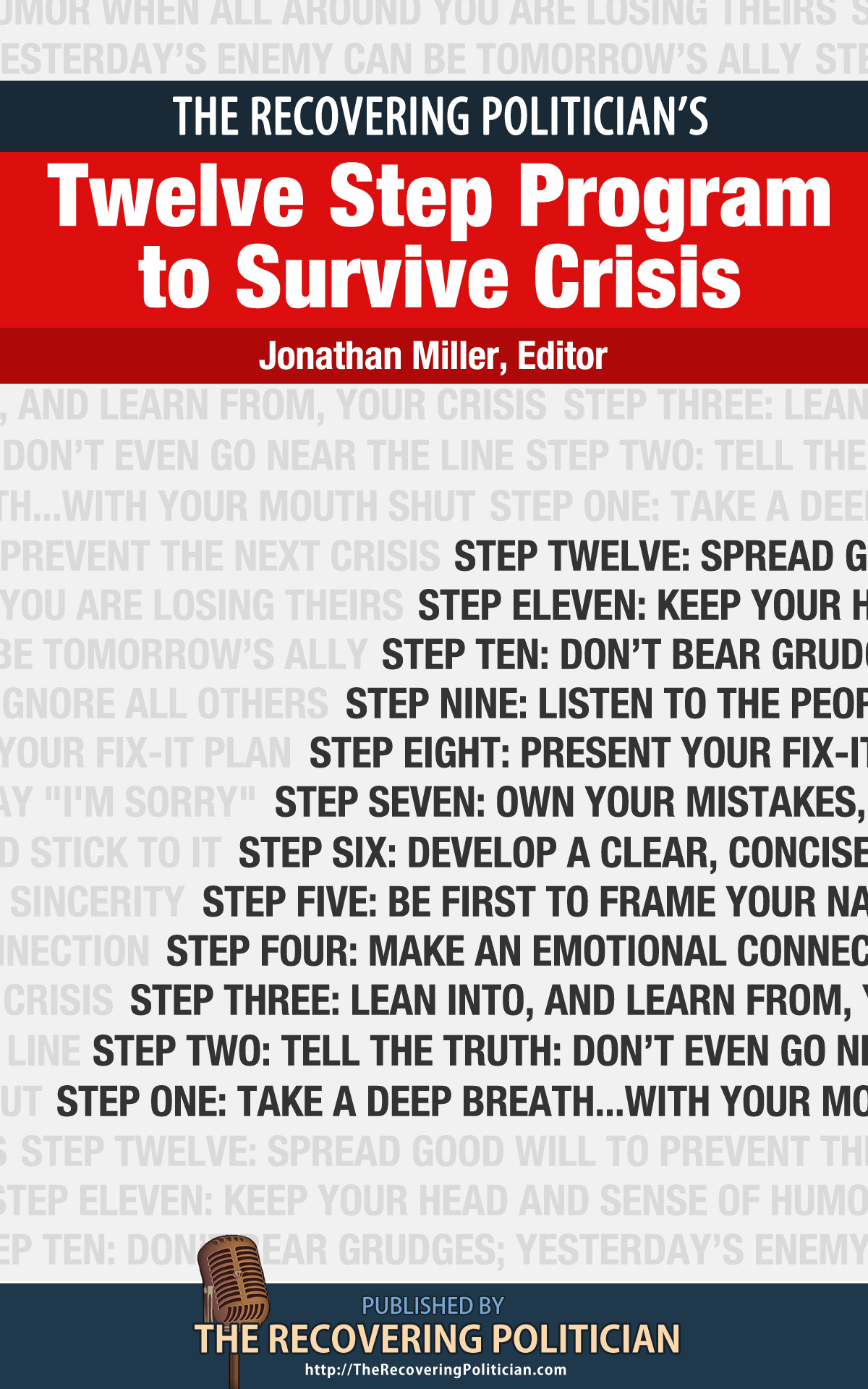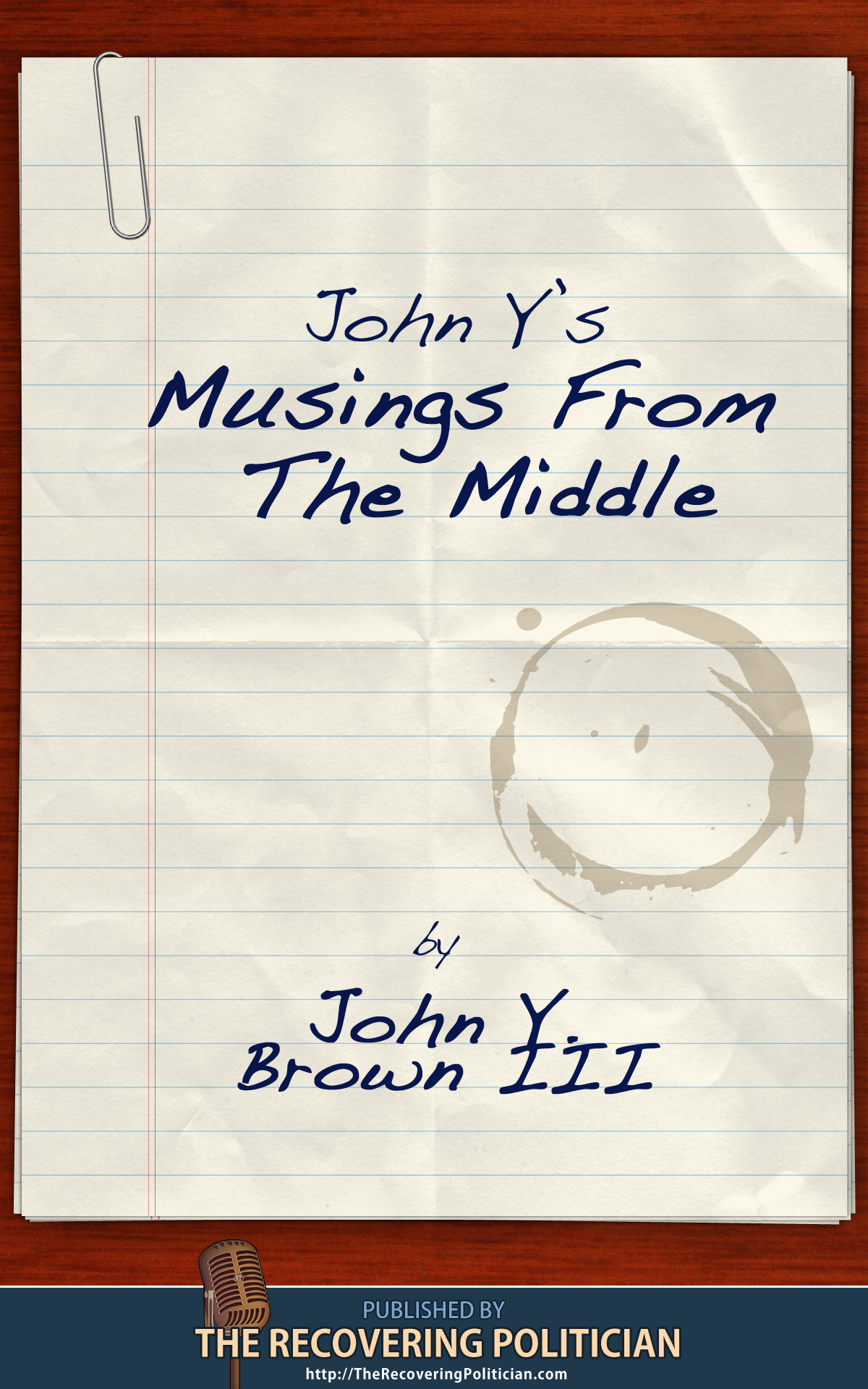By John Y. Brown III, on Wed Dec 24, 2014 at 12:00 PM ET  A Samaritan named John shopped long and hard one day at a large all-purpose consumer goods store. When he finished paying for his items he placed his several bags in a shopping cart because he remembered he had parked in the far back of the parking lot and was too lazy to personally carry the shopping bags that far all by himself. A Samaritan named John shopped long and hard one day at a large all-purpose consumer goods store. When he finished paying for his items he placed his several bags in a shopping cart because he remembered he had parked in the far back of the parking lot and was too lazy to personally carry the shopping bags that far all by himself.
The shopping cart made everything mucb easier and after John had placed the shopping bags in his car he looked at the empty shopping cart and felt tired. John then looked at how far away the entrance to the store (where he picked up the shopping cart) now appeared to be. John then decided to look around the parking lot to see if anyone was watching him and if he could get away with leaving the empty shopping cart in the back of the parking lot and nobody notice.
John decided he could and started to get into his car with a quickened pace. But something stopped him. A pang of guilt tugged at his heart which softened as he thought about some stranger having to push his shopping cart all the way back to the store entrance even though they didn’t even use it to shop.
John knew that was wrong and felt called upon by the Lord to act righteously and not self-servingly. At that moment, John the Samaritan locked his car doors with his remote car locking device and grabbed the cart with a convicted grip and pushed his shopping cart all the way to the store entrance where he stopped to see if anyone had noticed his charitable deed.
No one appeared to be looking at Samaritan John’s good deed at that moment so John decided to wait for someone to eventually turn up who would notice and publicly affirm his righteousness. A kind faced elderly woman passed by John pushing her shopping cart back to the store entrance and locking it into the shopping cart que. Samaritan John smiled benevolently at the woman as if to say, “Look at me. I am doing that too. I am one of the few good people at this large all-purpose consumer goods store, just like you. We are pretty great, huh?”
Samaritan John didn’t say this out loud because that would be committing the sin of pride. He just thought it and quitely returned to his car full of shopping bags, unlocked his car door with his remote device, and drove home whereupon Samaritan John transcribed the parable of his good deed today and posted it on Facebook. Not to boast, of course. But so that others might learn from his good deed and do good too.
By John Y. Brown III, on Tue Dec 23, 2014 at 12:00 PM ET  I would like to know who the asshole is who bought his true love all the things listed below one Christmas and then put in a song to brag about. I would like to know who the asshole is who bought his true love all the things listed below one Christmas and then put in a song to brag about.
He makes all the rest of us look bad.
And the fact this song gets sung over and over this time each year only rubs it in.
I mean, come on! Even if we guys got all this for our true loves, where would you put it all? And don’t you think by January you would be bored and tired of almost all of them, except maybe the golden rings?
Besides, I am guessing by the 13th day of Christmas, this guy declared bankrupcy, was charged with kidnapping 12 drummers, 11 pipers, 10 lords, 9 ladies and 8 maids, and was institutionalized or sent to prison.
I know having all this stuff sounds good. But do you really want to be with a guy like that?
Just think it through.
12 Drummers Drumming
11 Pipers Piping
10 Lords a Leaping
9 Ladies Dancing
8 Maids a Milking
7 Swans a Swimming
6 Geese a Laying
5 Golden Rings
4 Calling Birds
3 French Hens
2 Turtle Doves
1 Partridge in a Pear Tree
By Erica and Matt Chua, on Tue Dec 23, 2014 at 8:30 AM ET When I decided to take a trip around the world with my husband I never thought that we would have a constant, often unwelcome third wheel: guilt. In my mind it is impossible to do third world travel and never feel even a twinge of guilt about the fact that your traveling in a place where your daily expenditure, even if you’re on a budget, is often equivalent to a month’s salary (or more) for the average resident of the country your visiting.
It is impossible to avoid history, politics, the morality of tourism and the complications of charity while visiting developing countries. In fact thinkCHUA and I often can’t help but wonder if third world travel is one of the most selfish things you can participate in. Enjoying the wonders of impoverished nations at dirt cheap prices then writing home to our family and friends about our adventures. Sounds pretty selfish and makes me wonder about my role in it all.
Are some of the issues, such as begging that I find so hard to face, actually my fault? Are the children selling me bracelets, postcards and flowers exploited because so many people fall victim to their adorable smiles and disarming requests for “one dollar, you buy something, one dollar.” Do the adults that send them out to peddle their goods and pester tourists really mean ill or are children just better salespeople because their efforts are more fruitful? Is the answer to say “no” to the children and if so, have you ever done it? Because it’s not easy, it is so hard to tell a grinning child that you won’t part with just a dollar for their benefit. Or to tell a leg-less man that you won’t give him a few dollars as he drags himself along the sidewalk by his hands.
Traveling responsibly requires that we make an effort to know more about a country than simply the location of its monuments and the bargains in its bazaars; it charges us to have a better understanding of the reality of peoples’ lives. The only way to learn more about a country and it’s culture is to experience it on the ground, which is where the “catch 22″ comes in. We have enjoyed our time in developing countries immensely and would recommend it to anyone, but from my experience it is difficult to avoid the guilt completely no matter how responsible you are.
“Power lies in the growth of awareness.”
Herbert de Souza, Brazilian human rights activist
I also have to remember that travel is about seeing the world with open eyes, stepping outside your comfort zone and taking the bitter with the sweet. The more I travel, see and learn about the world the more I realize how little I know, how many more places there are to travel to and how much there is to see and learn. This awareness is arguably the most important part of this entire journey. Without my intense feelings of guilt and my confusion about what is the “right” thing to do about it this trip would simply be a sightseeing adventure. However, it has been much more than that and it will change me and how I see the world forever.
From my experience traveling in the developing world it is more often positive for everyone involved than it is negative. As I mentioned a huge part of making the experience positive is awareness. The awareness of my guilt is in actuality a beneficial part of third world travel and sharing my stories and experiences on this blog is helpful for me and in raising awareness about these issues. As Herbet deSouza says “Power lies in the growth of awareness.” So, my hope is that by sharing my thoughts and anecdotes from our journey I will at least in a small way raise awareness about the triumphs and struggles of the developing world.
By John Y. Brown III, on Mon Dec 22, 2014 at 12:00 PM ET  I have always had mixed feelings about Louisville (and Kentucky) being able to support an NBA franchise. I have wanted it to be true that we can support a professional basketball team– but understand from close up, from our ABA days, what a daunting reality that is. I have always had mixed feelings about Louisville (and Kentucky) being able to support an NBA franchise. I have wanted it to be true that we can support a professional basketball team– but understand from close up, from our ABA days, what a daunting reality that is.
Over the past 40 years my attitude has been a lukewarm, “Well, maybe we should try and see. If it doesn’t work, it is better to have tried and failed than to have never tried and never known for certain.”
But recently, and for no particular objective reason I can point to, my opinion about Louisville and having an NBA team, have lurched a bit. Only a little –but enough to move from a lukewarm and hopeful “Maybe we should give it a try” attitude, to a convinced and confident “We must try” and “We are ready as a city” attitude about Louisville having an NBA team.
I think now is the time. And I think if we are sincere about being a “Possibility City” there is no better way to prove it than by bringing an NBA team to Louisville. And having it not only succeed finically but thrive as a team within the NBA.
After all, “possibilities,” if not acted on, are just missed opportunities.
Is Louisville more of a city of missed opportunities or a city of possibilities realized?
That is the real question we as Louisvillians need to be asking ourselves –daily. Followed by the next question: What are we doing to make sure the latter is true?
Nothing that could happen in Louisville over the next 3-5 years would signify more convincingly that we are a city that is a good steward of possibilities than becoming home –not just to an NBA team —but the next great NBA team (ideally deep with former UL and UK players). Of course, I think this team should be “Kentucky” named like the “Kentucky Colonels.” We would need our state–not just the city of Louisville–to support this team, if we were serious about being successful. Perhaps, too, there should be several games a year in Lexington and N.KY to help underline the point the team belongs to the state not just one of our cities. But the onus and primary sacrifice (and benefit) would be on Louisville.
That is my humble –and, yes, somewhat daring –opinion. But if you don’t dare, possibilities die. And this possibility deserves both our daring and our commitment. Before it dies a final death. And we don’t have another 10 or 20 years to waste before that happens.
Now
By Saul Kaplan, on Mon Dec 22, 2014 at 8:30 AM ET  Welcome to the era of business model proliferation. Welcome to the era of business model proliferation.
Our obsession with scalability is getting in the way of unleashing the potential of the 21stcentury. We are so fixated with scalability we have taken our eye off of delivering value at every scale including the most important scale of one. The Industrial Era did that to us. Reaching the mass market takes precedence over delivering value to each customer. New customer acquisition trumps delivering value to existing customers. It’s not only business that is obsessed with scale. Our obsession with scaling a national education, health care, and government system has also taken our eye off of delivering value to each student, patient, and citizen. We have been talking about the idea of mass customization for years while we continue to hang on to business models that were designed for scale more than for delivering customer value.
The Industrial Era brought us the reign of the predominant business model. Every industry quickly became dominated by one business model that defined the rules, roles, and practices for all competitors and stakeholders. We became a nation of share takers clamoring to replicate industry best practices to gain or protect every precious market share point. Companies moved up or down industry leadership rankings based on their ability to compete for market share. Business schools minted CEOs who became share-taking clones of one another. It was all about scale. Bigger was always better. So what if the predominant business model doesn’t serve everyone’s needs? So what if it doesn’t even serve existing customers well? Scalability and share taking became about protecting the predominant business model by preventing the emergence of new business models. Incumbents do everything in their power to erect regulatory and legal moats to keep new business models out of the market.
You know the scalability frenzy is out of control when iconic entrepreneur, Facebook founder Mark Zuckerberg, proclaims;
“For us, products don’t get interesting to turn into businesses until they have about one billion users.”
No wonder entrepreneurs are obsessed with scalability. Everyone wants to be the next Mark Zuckerberg. Entrepreneurs always fall into the scalability trap of trying to imagine what it will take for a model to reach large numbers of customers before they have demonstrated that they can create, deliver, and capture value for only a few. Over many years of mentoring entrepreneurs I have observed them, particularly tech entrepreneurs, spend too much sweat equity and startup capital focused on developing code and a beta version of a web platform before they have a clear value proposition and a testable business model concept that can withstand initial customer contact.
Serial entrepreneur and Y Combinator co-founder Paul Graham says it well:
“As long as you can find just one user who really needs something and can act on that need, you’ve got a toehold in making something people want, and that’s as much as any startup needs initially.”
I always advise entrepreneurs to take a minimum viable business model to the market before thinking about scalability. Start by uncovering the job someone is trying to do, figure out how you can get the job done better, and demonstrate it. Entrepreneurs skip this step at their own peril. Develop a business model prototype and test it with a few people. If the business model prototype works, then and only then, start working on what it will take to scale it to reach more customers. It takes successful entrepreneurs three, four, sometimes five tries to get a business model right. Why worry about scalability until you land on one that works for the customer? Focusing on scale too early leads to too many elegant solutions too far removed from real customer contact resulting in too many dead ends.
Institutional leaders are even more obsessed with scalability than entrepreneurs. They fixate on protecting their current scale and assess all new customer value creating ideas through the lens of their current business model. If opportunities to create customer value in new ways are distracting to the organization or would cannibalize current business they’re routinely dismissed. The questions asked and metrics applied to evaluate new opportunities are more about scalability and fit, than about creating new customer value. The baseline for evaluation is the current business model. Market making opportunities are routinely screened out or ignored for more predictable share taking opportunities to increase scale. This is why CEO’s are so hungry for merger and acquisition opportunities. It’s all about scale, not changing the customer value equation. New business models force institutional leaders to rethink scalability.
We live in an era that screams for less share taking and more market making. Market makers don’t accept the idea that a predominant business model has to dictate the industry landscape. They create a new market with a different playbook. We have access to more enabling technology than we humans and the stubborn institutions we live and work in know how to absorb. Today, it’s possible to unleash an infinite number of exciting business models to create, deliver, and capture customer value. Today’s consumers refuse to accept that there is only one predominant business model in every industry and that they have to take or leave its offerings. Consumers now demand personalized experiences, products, and services.
Consumers are bringing the era of the predominant business model to an end. Business models don’t last as long as they used to. Predominant business models are crumbling all around us. The new strategic imperative for all institutional leaders is R&D for business models as a core competency. It was easier to be a CEO in a world constrained by a predominant business model. In a world defined by business model proliferation CEOs have the trickier task of both pedaling the bicycle of today’s business model while leading the exploration for a steady flow of new business models. If they don’t there is a market maker out there who will.
It’s time end our obsession with scalability. There are too many consumer, student, patient, and citizen needs left unmet by predominant business models in every industry. There are too many new business model concepts stuck on white boards and in consulting decks. We are still allowing predominant business models to slow down and block the emergence of new business models that can better meet our needs. It’s time to move from the era of the predominant business model to the era of business model proliferation. Let a thousand business models bloom.
By John Y. Brown III, on Fri Dec 19, 2014 at 12:00 PM ET  For the first time I just had the urge to post something on Facebook –but resisted doing it. Because —and this is so weird for me to type — because it seemed “silly.” I can’t recall that ever happening to me. Ever! For the first time I just had the urge to post something on Facebook –but resisted doing it. Because —and this is so weird for me to type — because it seemed “silly.” I can’t recall that ever happening to me. Ever!
I don’t know what this means …but I fear it means something. That something unusual is happening to me. Something pivotal. Like that first deep raspy cough you notice before pnuemonia sets it. Or like the feeling when a fever breaks and you know you are going to be okay.
I feel like this disinclination to post something absurd and pointless on Facebook may well be the first “deep cough” or “fever break,” so to speak, indicating the beginning of the end of my mid-life crisis.
I mean, of course it is true that the trajectory of a mid-life crisis can’t go up and up forever. At some.point it has to decline and resolve itself. After all, the “crisis” part of the term “mid-life crisis” suggests a downward spiral. So, you kmow, one more reason the upward trajectory thing can’t go on forever.
If this is true I am going to start acting more maturely in all kinds of ordinary situations. People won’t recognize me and others will wonder if I died or moved out of the country or was buried alive by someone who had to spend a lot of time around me.
Others may wonder if I am finally starting to grow up and act my own age. And if this “grown-up acting thing” really takes hold of me, still others may simply conclude that I have come down with pnuemonia. Or that my fever has finally broken.
I don’t know what I will do with myself.
Or maybe this means I am going to start really getting into Instagram?
By Julie Rath, on Fri Dec 19, 2014 at 8:30 AM ET People often ask me – usually at parties – if I walk around every day critiquing peoples’ outfits. While I can turn my critical eye on and off, and I certainly never go up to anyone and give them my opinion unsolicited, there are certain mistakes that I see consistently. If you’re someone who cares about how he looks (and I assume if you’re reading this article, you are), read on for three common errors and how to easily nip them in the bud.

1) Loafers with your suit – I get it. Traveling in lace-ups is no fun. Try a monkstrap instead, like the pair above. You can slip in and out of them, and they work with a suit.
 2) Wearing pants that are too big in the waist – If your belt loops are pulling up when you tighten your belt like in the picture above, it means the waist on your pants is too big, and you run the risk of having diaper butt. Go down a size and your pants and belt won’t work against each other. 2) Wearing pants that are too big in the waist – If your belt loops are pulling up when you tighten your belt like in the picture above, it means the waist on your pants is too big, and you run the risk of having diaper butt. Go down a size and your pants and belt won’t work against each other.

3) Mismatching themes – I often see guys in preppy polo shirts or khakis wearing things that are edgy in feel (like a biker jacket or boots) elsewhere in their outfit. It doesn’t work. If one piece in your outfit is preppy or conservative, the whole look should be such. Likewise, if one piece in your outfit has an edge to it, the rest of your outfit should too. For example, you wouldn’t wear a rough and tumble boot like the one above with a pair of traditional khakis. A pair of dark jeans or slim dark dress pants would suit them much better.
Have you ever made any of these mistakes? Fess up! I’d love to hear where things have gone awry for you. Leave me a comment below, and perhaps I can offer some additional solutions.
-Content provided by Rath & Co. Men’s Style Consulting. Read more: http://rathandco.com/2014/09/3-style-mistakes-youre-making-everyday-and-how-to-fix-them/#ixzz3KJh7Zx00
By John Y. Brown III, on Thu Dec 18, 2014 at 12:00 PM ET  This holiday season be Goldilocks-esque and seek that desireable middle point between two extremes. This holiday season be Goldilocks-esque and seek that desireable middle point between two extremes.
Don’t eat too much nor eat too little.
Don’t talk too much nor talk too little
Don’t expect too much of yourself but don’t expect too little.
Don’t expect too much of others but don’t expect too little of them either.
Don’t sleep too much but don’t sleep too little.
Don’t buy too much but don’t buy too little.
Don’t feel too much but be sure to not feel too little.
Don’t think too much nor think too little.
Don’t act too old but don’t act too young.
Don’t love too mucb but be sure not to love too litle.
Don’t eat anything too hot and don’t eat anything too cold. Only eat things at the temperature that is “just right.”
Make sure your bed isn’t too soft or too hard –but “just right”
And don’t try to be too good but don’t be too bad either. Strive instesd to be “just right.”
By Josh Bowen, on Thu Dec 18, 2014 at 8:30 AM ET  Nutrition is polarizing. Nutrition is not black and white. Nutrition can not and never should be the same for everyone. These statements are the reason we have so many diet books, nutritional questions and a population of people that have analysis by paralysis on trying to eat “healthy.” Nutrition is polarizing. Nutrition is not black and white. Nutrition can not and never should be the same for everyone. These statements are the reason we have so many diet books, nutritional questions and a population of people that have analysis by paralysis on trying to eat “healthy.”
As I have written before, not all proteins are created equal. Some contain more essential amino acids than others. To keep from rehashing old material click on the link above to read about the differences in proteins.
The biggest question I get is “How much protein should I take in?” This is a great question and one that has been researched for the past 50 years. The results may be slightly different but the one fact that stays the same is “it depends on your activity and level of intensity.” Meaning in order to know how much you should take in, you need to align your intake with your activity and how vigorous that activity is.
In a normal untrained person, the recommended protein intake is 0.8 grams per kilogram of body weight (or 0.36 grams per pound of body weight). This recommendation is for sedentary people and only is a bare minimum to keep from protein degradation or the burning of muscle as fuel. In this example a 150 lbs person would take in 54 grams of protein per day. Obviously not enough to build muscle tissue.
For individuals participating in high intensity training, protein needs to go up to 1.4-2.0 g/kg (or around 0.64-0.9 g/lb) of body mass. In our 150 lbs example, this person would need to take in 95-135 grams of protein per day. A much more ideal percentage of protein.
Hold up there is more…
Beyond the basics of preventing deficiency and ensuring a baseline of protein synthesis, we may need even more protein in our diets for optimal functioning, including good immune function, metabolism, satiety, weight management and performance. In other words, we need a small amount of protein to survive, but we need a lot more to thrive.
We can only store so much protein at one time.So in order to optimally supply your body with much needed protein, you must eat it periodically throughout the day. Eating a 16 oz. steak and calling it a day, is not going to give you the overall effects that eating 5-6 servings of high protein foods will.
Can you eat too much protein? Possibly, but it would be hard. Protein can be converted to sugar and stored. However, it is an inefficient process and not one the body wants to undergo. Studies have shown that a high amount of protein intake (up to 1.2 grams per lb) has no health risks to the kidneys.
So which protein is best?
Research has shown that foods high in the essential amino acid, leucine, increase protein synthesis (breakdown of protein to be stored) higher than the other two essential amino acids. Foods high in leucine are spirulina, egg white, fish, poultry, and meat.
Take home points…
1. Shoot for at least half your body weight in grams of protein per day. If wanting to gain muscle increase to your body weight in grams.
2. If weight loss is a struggle, evaluate where and how much protein you are getting. Odds are it is not enough for your body weight and fitness goals.
3. Try to eat protein in every meal.
4. Choose whole foods over supplementation. However, choose supplementation over nothing at all.
5. Can’t stress this enough, if you want to get leaner you must consume more protein!
By John Y. Brown III, on Wed Dec 17, 2014 at 12:00 PM ET  There is a time to love There is a time to love
There is a time to hate
There is a time to be sad
There is a time to be joyful
There is a time to judge
There is a time to seek forgiveness
There is a time to feel ecstatic and have hallucinations
There is a time to feel paranoid and have cotton mouth
And there is a time to titrate your medications
|
The Recovering Politician Bookstore
|
 A Samaritan named John shopped long and hard one day at a large all-purpose consumer goods store. When he finished paying for his items he placed his several bags in a shopping cart because he remembered he had parked in the far back of the parking lot and was too lazy to personally carry the shopping bags that far all by himself.
A Samaritan named John shopped long and hard one day at a large all-purpose consumer goods store. When he finished paying for his items he placed his several bags in a shopping cart because he remembered he had parked in the far back of the parking lot and was too lazy to personally carry the shopping bags that far all by himself.












